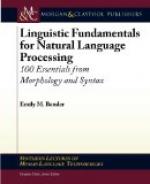Allow me to recal an idea we considered in a former lecture. I said no action as such could be known distinct from the thing which acts; that action as such is not perceptible, and that all things act, according to the ability they possess. To illustrate this idea: Take a magnet and lower it down over a piece of iron, till it attracts it to itself and holds it suspended there. If you are not in possession of a magnet you can make one at your pleasure, by the following process. Lay your knife blade on a flat iron, or any hard, smooth surface; let another take the old tongs or other iron which have stood erect for a considerable length of time, and draw it upon the blade for a minute or more. A magnetic power will be conveyed from the tongs to the blade sufficient to take up a common needle. The tongs themselves may be manufactured into a most perfect magnet. Now as the knife holds the needle suspended beneath it you perceive there must be an action, a power, and cause exerted beyond our comprehension. Let the magnetic power be extracted from the blade, and the needle will drop to the floor. A common unmagnetized blade will not raise and hold a needle as this does. How those tongs come in possession of such astonishing power; by what process it is there retained; the power and means of transmission of a part of it to the knife blade, and the reason of the phenomena you now behold—an inanimate blade drawing to itself and there holding this needle




